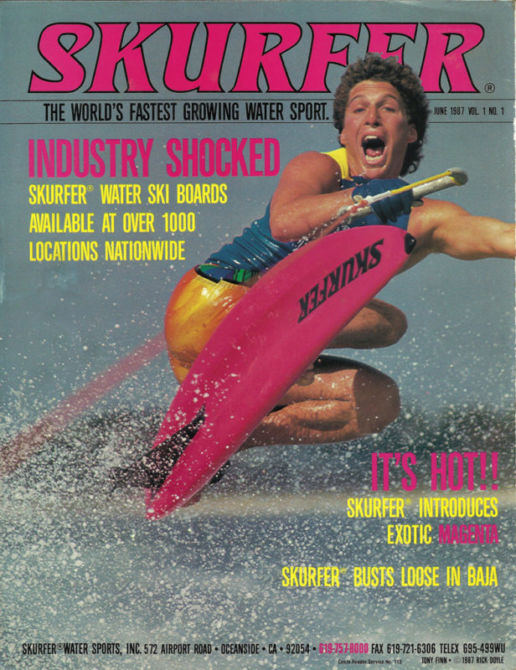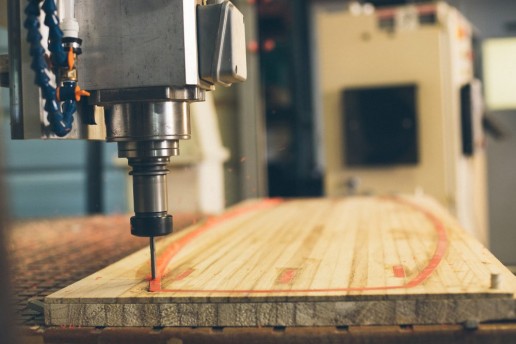But first, a bit of history about wakeboard stance widths...
Before we show you how to determine the best stance to prevent common wakeboard injuries we have to rewind it back a bit and establish how wakeboard stances have evolved. Or even more important, why they evolved. How a rider stands on a wakeboard, aka their riding “stance”, has progressed broadly since the early days of wakeboarding. In the 70s & 80s stances were narrow, directional (pointed 1 way) and mounted towards the tail of the wakeboard because of the influence waterskiing had on wakeboarding.

It wasn’t until the invention of twin tip wakeboards such as Waketech Flight 69 that stances became more centered, symmetrical and wider. This gave the rider more stability and control no matter which riding position they were in, regular or switch stance. This resulted in new styles & a new direction for wakeboarding.
As boat wakes grew in size, stance widths increased substantially with the notion that a wider stance would offer much more stability and control. It did also, however, place more stress on the rider as a trade off.
As the cable parks become even more popular, stance width has again come full circle and is trending back towards a narrower stance for a couple reasons. Some think the ‘hesh’ style of riding narrower looks better. The physical benefit is less joint and ligament stress on the rider because flat water landings are common and riders rarely rely on downward transitions at a cable park.
Over the years, the evolution of wakeboarding influenced our stances, our control and style out on the water. It’s knowledge you should understand so you can prevent injury & create a riding style of your own.
Your knee should have equal weight distributed so both sides of the knee joint share the load and impact of hard wakeboard landings.
— Kyle Schmidt
Common Wakeboard Injuries: Golden Rule #1 Protect Thy Knee Ligaments!
Before we dive into your ideal stance width and angle, let’s discuss your knees for a moment…
Inside the knees are two cartilage pads that help cushion the impact of running, jumping and, in our case, hard landings on a wakeboard. These two cartilage pads are called the medial and lateral meniscus.
The medial meniscus wraps around the inside of the knee joint and the lateral wraps around the outside of the knee joint. If an impact is balanced across these two pads they both work together to cushion the blow. If an impact is unbalanced, one side of the meniscus will take on more of the load than the other which increases the chance of damage to that side. This is far and away the most common wakeboard injury. So I’ll walk you through how best to prevent it

Golden Rule #1. Protect your knee by having a stance width that tracks balanced so both sides of the knee joint share the load and impact of landings. That’s it. There is no golden rule #2.
Ok, so now you know this, now we figure out how to find the perfect balance and stance to protect thy ligaments.
Your goal to prevent common wakeboard injuries is to find a knee position that moves with the least amount of stress on your legs, hips and back as you squat down.
— Kyle Schmidt
Determining Your Stance Width To Prevent Common Wakeboard Injuries
Your height is the number 1 deciding factor in how wide your stance should be. The other important factor is how your body is built. This has a bearing on how wide or narrow your stance width should be.
Your end goal for an ideal stance width is to find a position that moves with the least amount of stress on your legs, hips and back as you squat down. A good way to think about an ideal stance width for preventing common wakeboard injuries is to think about it in terms of board control vs. stability. I’ve created a stance chart that gives you a good starting point in inches and in centimeters.

Determine Your Stance Width Starting Point
Now, draw a line from the outside of your shoulder to the ground. We’ll call this your shoulder line. Half your foot should sit outside the shoulder line and half your foot should sit inside your shoulder line. This starting point will place your feet a little wider than shoulder width apart and put you in an athletic, balanced stance [see image]. This starting point also gives you stability side to side so you fall less over your board’s nose and tail.
After you find this starting point for width you have to consider your body type. Make sure that you’re positioned on your board so your knees track properly over your feet to help reduce the chance of injury to the knee ligaments and cartilage. Decide which body type you are, bowlegged, straight legged, or knock kneed so you can adjust your starting stance accordingly if necessary.
"If you need to see how this all translates to a wakeboard, watch pros ride behind a boat vs. at a cable park. See if you can spot the body type."
— Kyle Schmidt

Know Your Body Type
Okay, now we want to determine your body type so we can make slight adjustments to your wakeboard stance. This will really dial it in to prevent common wakeboard injuries. To determine your body type, stand on the ground with your feet touching close together. Then look at the space between your knees. Take note of the shape your legs make. Standing in front of a mirror may make it less awkward…or more, you decide. There are 3 shapes your body makes. They are shown in an exaggerated illustration below so you can understand visually how they look.

Bowlegged
Bowed legs will have a larger distance between knees. Legs from hip to foot will arch outward a bit in a bowed fashion. Knees tend to track outward to the sides of the body as the legs bend. This may require a slightly wider stance width to accommodate the outward tracking motion. This wider stance ensures equal pressure is applied to both the medial and lateral side meniscus during the hard impact that occurs during landings.
If a bowlegged stance is too narrow or two wide, it can cause the knee to track poorly and place unbalanced pressure on either side of the meniscus elevating a risk of injury. An unbalance impact will also strain the collateral ligaments running along the sides of the knee joint. That’s no bueno!

Straight legs
In the middle body type, there’s straight legs. With feet touching together there’s a slight space between the knees. Legs will appear straight from the hips down to the feet. For this type the starting stance from the chart below will put your legs in a position so your knees track straight over your feet. This will allow equal pressure on both sides of the knee joint.
Keep in mind you may have to adjust your stance in either direction because legs are not always perfectly proportional. You could also have less flexibility in one leg more than the other. The key here is to make sure that while you squat down in your balanced riding stance and bend your legs, both knees move in line with your foot, not inward or outward.

Knock Knees
Finally, we have knocked knees. With feet together, no space exists between the knees. Often, there’s pressure between the knees as they touch. The knees cross over each other and may sometimes knock together as they walk or run. Hence the name “knock” kneed. As dopey as it sounds, it’s usually more common than most people think. Knock kneed will typically need to adjust the starting stance narrower to accommodate the natural inward knee tracking.
If you need to see how this all translates on a wakeboard, watch pros that ride behind a boat vs. at a cable park. See if you can spot the body type.

Through my years of experience as a professional rider and coach I have found that a solid starting stance angle is 12 degrees ‘ducked’ if riding with a stance width of slightly wider than shoulder width apart.
— Kyle Schmidt
Determining Your Stance Angle To Prevent Common Wakeboard Injuries
Now, let’s discuss setting your wakeboard boot stance angle. Most modern boots will have a stance adjustment & angle system attached to each side of the base plate in order to mount boots to a board. We developed a system we call Smart Toof Technology.
This angle adjustment allows the boot to rotate at a center point so you can adjust to specific stance angles. The angle is measured in degrees of rotation.
If you stand with your feet together so they are pointing straight forward, your feet are at zero degrees of rotation. This sets a baseline for the stance degrees. Since we ride wider than the a zero degree stance angle put us in, we must turn our feet outward slightly as our stance gets wider. This helps our knees track straight over our feet. This outward angle of the boots is referred to as a ‘ducked’ stance in wakeboarding.
Through my years of experience as a professional rider and coach I have found that a solid starting stance angle is 12 degrees ‘ducked’ if riding with a stance width of slightly wider than shoulder width apart.

Where do you wakeboard?

One final variable that might influence how wide you ride is your riding environment. The two riding environments are often classified as riding “behind the boat” or riding “at the cable”.
When riding behind the boat, riders often prefer a wider stance for a couple reasons. The first being a rider has more stability side to side over the nose and tail of the board. Why is this? Tricks happen directly behind the boat as the board’s position is traveling perpendicular to the boat’s driving direction.
A wider stance width also makes it easier on the rider because a boat wake has multi-directional energy. Meaning, the wake has variable, abrupt transitions compared to the longer, motionless ramps and transitions at the cable park. So again, riding with a slightly wider stance behind the boat vs. the cable park gives a rider more stability from the wake’s transitions. Remember, this wider stance is only a suggestion for boat riding when compared to cable riding.
So why ride narrower at the cable? From the standpoint of injury prevention, riding narrower aligns your legs closer with the rest of your body. This is ideal because riders land on flat water more often at a cable park. A better alignment with your body spreads the impact evenly across your knees as I mentioned previously. Riding a wider stance at a cable park can actually direct impact and uneven pressure in the knees, hip joints, and lower back causing more negative stress throughout the rest of the body.
"Having the correct stance for your body type is important to maintain correct alignment of your ankles, knees and hips. This leads to less injury and stronger riding!"
— Abby Delgoffe

Calculate Your Stance Width To Prevent Common Wakeboard Injuries
Now, I’m no doctor. Luckily, we have team rider who is, Abby Delgoffe. With her body mechanics knowledge as a professional chiropractor, we put our heads together to help you determine your ideal stance. Check out the app below! Remember, you may need to tweak your stance width and angles a few times until you find the most comfortable stance option after some testing.
With our latest wakeboards, we made a conscious effort to develop new half inch insert spacing. We found half inch insert spacing offers the perfect combination of having more stance options yet does not…overcompensate. You can find our 5 and 7 pack M6 inserts in use across our entire line for 2018.
Okay, congrats to you. If you read this far you now know the nitty gritty details of how stance widths are calculated. Still want more? We’ve developed an app to help you find your ideal stance with. Check it out below and share your stance width with a friend.
If I missed something please comment below. If you enjoyed the article please share it with a friend.
Sign up. Get $50 instantly & Access Humanoid Wakeboard's Live Streams, Content & Events.
Related Posts
November 27, 2018
Want a wakeboard sponsorship? Here’s what you need to know.
Wakeboard sponsorship has changed…
September 6, 2018
Everything after wakeboarding. A guide for Surf Expo Orlando [The Best Orlando Golf Courses]
Everything to do after wakeboarding.…
August 15, 2018
Adjusting your wakeboard rope is the best kept secret to crush your trick list.
The progression of learning and landing…
April 26, 2018
Using Creative Brand Collabs To Grow Your Business [Finding Inspiration In Street Art]
How did skateboarding start at the top…
March 19, 2018
Wakesurfing on a budget: Ever tried ‘Dronesurfing’?
With cable systems helping wakeboarding…
July 10, 2017
Top 10 Recommended Lines On Kaesen Suyerhoud’s Unit Wakeboard Feature
Instead of releasing a 'run of the…
April 13, 2017
Humanoid Wakeboards Warranty: All Good Forever Lifetime & Impact Insurance
From Day 1 we've experimented with…
November 24, 2016
15 Of The Best Wakeboard Tools We Use On The Regular
For the upcoming season we are going to…
July 26, 2016
Cable Wakeboard Magazine: The Renovation Contest
April 8, 2016
Tag Your Wakeboard or Wakesurfer The Cheap, Quick & Easy Way
Dust off your wakeboard and give it a…
December 8, 2014












